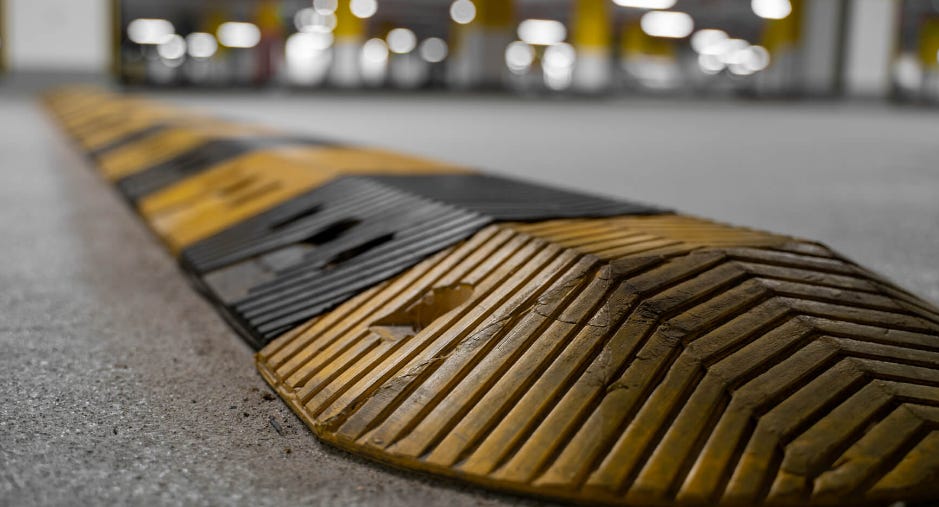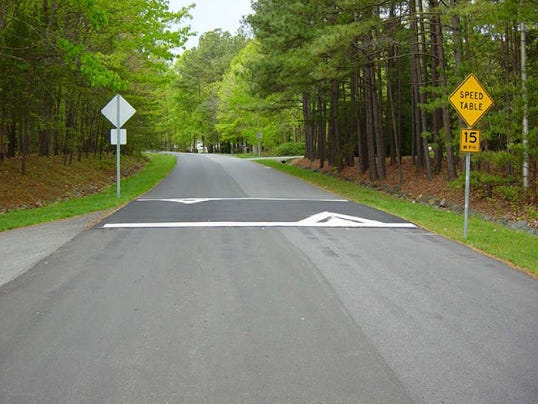Smooth Sailing or Bumpy Ride? The Case for Speed Humps
Every residential speed complaint wants speed humps
All too often, my office receives complaints about motorists speeding on residential roads. The comments are typically along the lines of, "The cars are flying all day long!", "Where are the police?", and "Something needs to be done!" While residents' concerns are valid, one of the larger issues is the embellishment of the complaint. Once investigated with data collected over several weeks, the reality often differs from the initial complaint and the subsequent social media outcry.
Studies frequently show that vehicles do exceed speed limits, which is a fact on nearly every road in America. However, installing speed calming measures on a roadway with 180,000 vehicles in a week, where the average speed is 35 MPH in a 35 MPH zone, is not justified. The number of vehicles traveling above 45 MPH is less than 1%.
This data can be interpreted in different ways. From a professional standpoint, it is negligible and not worth further investigation. However, as a homeowner, seeing 1,800 vehicles a week passing at speeds over 45 MPH is concerning.
Deploying police officers to such locations is challenging, as catching violators is often hit or miss. Unless data indicates a specific timeframe where most vehicles exceed 45 MPH, the issue typically occurs sporadically over 24 hours.
Requests for speed bumps, humps, or tables are common responses to speeding complaints. While open to suggestions, the knee-jerk reaction to installing speed humps without considering all factors often leads back to public dissatisfaction with statements like, "something needs to be done."
Let's explore the role of these traffic calming measures further.
Why Speed Humps?
Commonly believed to reduce accidents, make neighborhoods safer, and encourage responsible driving, speed humps are a popular measure.
Types:
- Speed Bumps: These are more extreme, forcing vehicles to almost a crawl. Commonly found in parking lots, they vary in height and can be made of rubber, asphalt, or concrete.

- Speed Humps: Longer and flatter than speed bumps, these provide a smoother transition and slow traffic to a reasonable speed.
- Speed Tables: Featuring a flat top, speed tables are designed to accommodate the entire wheelbase of most passenger vehicles. They are not recommended for routes with significant emergency vehicle traffic.

Each of these measures has its place, but the thought of vehicles slowing down in front of your home might feel reassuring. But let’s take a look at some negative impacts.
Increase in Noise Pollution:
When such measures are implemented, vehicles make additional noise at all hours. They slow down, some scrape their frames, then accelerate to the next one. This is particularly true for snowplows, delivery trucks, and garbage trucks.
Emergency Response Delays:
In larger residential developments, speed calming measures can create a slippery slope, as each subsequent road may request them. Speed humps can increase emergency response times by up to 10 seconds each. This additional time could be critical in emergencies.
Effect on Property Values:
This topic is debatable. Some families with children may prefer homes with speed humps, while others may avoid them. No conclusive study sways this argument either way.
The points above are not intended to discredit the effectiveness of speed humps. Instead, they offer a broader perspective on the initial complaints of constant speeding and the immediate call for speed humps.
Speed humps are somewhat outdated, and governing bodies often look for alternative traffic calming methods.
Digital radar signs have shown great success. They not only remind residents of their speed but also measure speed changes once activated. In my experience, there's been a 63% reduction in vehicle speed after the sign activates.
In one example on a 25MPH road:
From 8 AM to 11 PM, you can see significant percentages of vehicles slowing down once the sign is activated.
These reductions do not need to be substantial; a change from 29 MPH to 25 MPH can be effective. Additional data will be compiled, including average speed, 85th percentile speed, and any problematic time frames. Once this data is evaluated, it can guide decisions on whether to implement more aggressive traffic enforcement or to relocate the measures to another roadway. I find that regularly moving them around allows us to gather data and address complaints before they escalate.
This information is mainly gathered from my own experience working with traffic complaints, police departments, traffic engineers and traffic calming experts. Nothing in this article is meant to disprove any positive affects speed humps or tables can bring, I do believe they have their place.





